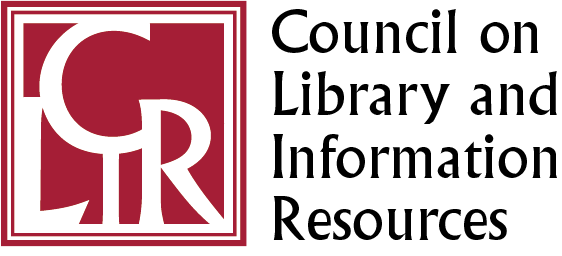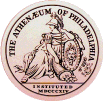Monthly Meeting of Friends of Philadelphia for the Southern District
Metadata
Title
Monthly Meeting of Friends of Philadelphia for the Southern District
Digital Identifier
Monthly Meeting of Friends of Philadelphia for the Southern District
Description
Philadelphia Monthly Meeting for the Southern District was established in 1772 by Philadelphia Quarterly Meeting by a division of the Monthly Meeting of Friends of Philadelphia. Its territory included the north side of Walnut Street and southward, including Moyamensing, Southwark and Passyunk. This Monthly Meeting included the Friends who worshipped in Pine Street (Hill Meeting) and at Fourth Street meeting houses.
Selected Items from the Collection
Record of Births and Interments Volume 1, 1772-1806
In the 17th and 18th centuries, Friends kept records of the births and deaths of members only. If a child was born to two Quakers in good standing at the time of the birth they were considered "birthright." On the other hand, Quaker burial grounds…
List of Members, 1772-1784
Most Quaker meetings did not keep membership lists until the 19th century, but urban areas were an exception. Population movement into and out of the City necessitated more documentation.
A List of the Members belonging to the Monthly Meeting of Philadelphia for the Southern District, 1784-1794
Most Quaker meetings did not keep membership lists until the 19th century, but urban areas were an exception. Population movement into and out of the City necessitated more documentation.
A List of the Members belonging to the Monthly Meeting of Philadelphia for the Southern District, 1797-1800
Most Quaker meetings did not keep membership lists until the 19th century, but urban areas were an exception. Population movement into and out of the City necessitated more documentation.
Marriages, 1773-1846
Quakers married each other in the presence of witnesses. A marriage certificate was drawn up and signed by those in attendance. This document also included the names of the bride and groom, where the wedding took place, and what monthly meeting…
Minutes, 1772-1780
The monthly business meeting is the basic unit of Quaker organization. In the 17th and 18th centuries, only members in good standing could participate. Men and women met separately to conduct business but worshipped together. The business meeting…
Minutes, 1781-1793
The monthly business meeting is the basic unit of Quaker organization. In the 17th and 18th centuries, only members in good standing could participate. Men and women met separately to conduct business but worshipped together. The business meeting…
Minutes, 1794-1806
The monthly business meeting is the basic unit of Quaker organization. In the 17th and 18th centuries, only members in good standing could participate. Men and women met separately to conduct business but worshipped together. The business meeting…
List of Women Members, 1785
Most Quaker meetings did not keep membership lists until the 19th century, but urban areas were an exception. Population movement into and out of the City necessitated more documentation.
Women's Minutes, 1772-1782
The monthly business meeting is the basic unit of Quaker organization. In the 17th and 18th centuries, only members in good standing could participate. Men and women met separately to conduct business but worshipped together. The business meeting…
Women's Minutes, 1782-1795
The monthly business meeting is the basic unit of Quaker organization. In the 17th and 18th centuries, only members in good standing could participate. Men and women met separately to conduct business but worshipped together. The business meeting…
Women's Minutes, 1796-1807
The monthly business meeting is the basic unit of Quaker organization. In the 17th and 18th centuries, only members in good standing could participate. Men and women met separately to conduct business but worshipped together. The business meeting…
Testimonies of Disownment (A-G)
A disownment was an involuntary termination of membership in a meeting, when a member of a meeting acted contrary to established discipline. This folder includes disownments from the Orthodox branch of Philadelphia Monthly Meeting after the…
Testimonies of Disownment (P-Z)
A disownment was an involuntary termination of membership in a meeting, when a member of a meeting acted contrary to established discipline. This folder includes disownments from the Orthodox branch of Philadelphia Monthly Meeting after the…
Removals Received, 1772-1795
A certificate of removal was a document given to persons who were transferring their membership from one monthly meeting to another. Their removal testified that they were members in good standing with the meetings they were leaving.
Removals Issued, 1773-1840
A certificate of removal was a document given to persons who were transferring their membership from one monthly meeting to another. Their removal testified that they were members in good standing with the meetings they were leaving. Includes…
Removals Issued, 1785-1786
A certificate of removal was a document given to persons who were transferring their membership from one monthly meeting to another. Their removal testified that they were members in good standing with the meetings they were leaving.
Removals Received, 1796-1813
A certificate of removal was a document given to persons who were transferring their membership from one monthly meeting to another. Their removal testified that they were members in good standing with the meetings they were leaving.
Membership, 1802-1819
Most Quaker meetings did not keep membership lists until the 19th century, but urban areas were an exception. Population movement into and out of the City necessitated more documentation.
Membership (Women), 1802-1808
Most Quaker meetings did not keep membership lists until the 19th century, but urban areas were an exception. Population movement into and out of the City necessitated more documentation.
Membership (Women), 1813-1833
Most Quaker meetings did not keep membership lists until the 19th century, but urban areas were an exception. Population movement into and out of the City necessitated more documentation.
Removals Received, 1796-1813
A certificate of removal was a document given to persons who were transferring their membership from one monthly meeting to another. Their removal testified that they were members in good standing with the meetings they were leaving.
Removals Received, 1814-1830
A certificate of removal was a document given to persons who were transferring their membership from one monthly meeting to another. Their removal testified that they were members in good standing with the meetings they were leaving.
Removals Issued, 1773-1840
A certificate of removal was a document given to persons who were transferring their membership from one monthly meeting to another. Their removal testified that they were members in good standing with the meetings they were leaving.
Minutes, 1807-1817
The monthly business meeting is the basic unit of Quaker organization. In the 17th and 18th centuries, only members in good standing could participate. Men and women met separately to conduct business but worshipped together. The business meeting…
Women's Minutes, 1808-1816
The monthly business meeting is the basic unit of Quaker organization. In the 17th and 18th centuries, only members in good standing could participate. Men and women met separately to conduct business but worshipped together. The business meeting…
Women's Minutes, 1816-1827
The monthly business meeting is the basic unit of Quaker organization. In the 17th and 18th centuries, only members in good standing could participate. Men and women met separately to conduct business but worshipped together. The business meeting…
Papers, 1772-1789
Miscellaneous papers might include reports, financial documents, epistles, and other items which were usually only briefly referenced in the minutes of the business meeting. Includes partial index of contents at beginning dated 1772-1872.
Papers, 1790-1806
Miscellaneous papers might include reports, financial documents, epistles, and other items which were usually only briefly referenced in the minutes of the business meeting.
Papers, 1807-1820
Miscellaneous papers might include reports, financial documents, epistles, and other items which were usually only briefly referenced in the minutes of the business meeting.





